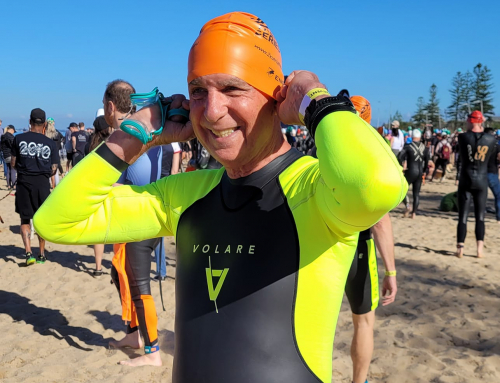UNDERWATER SWIMMING ANALYSIS FOR TRIATHLON
Swimming is a very technical sport. If you want to swim well, you need to achieve the best technique possible.
STEP ONE: FIND A GOOD COACH
Find a coach & swim squad with coaches who have the knowledge, skills, experience and technology to help analyse & explain the issues you may be having.
STEP TWO: CHANGE YOUR SWIMMING MECHANICS
Ask for specific drills and cues from your coach to help improve your technique. Pick 1-2 main things to focus on and get them right before moving onto the next thing.
STEP THREE: PRACTICE & MONITOR
Try and get to a coached swim squad a min of once per week (more where possible). Get the coach to monitor the skills you are working on & provide constant feedback.
SPECIFIC TRIATHLON & OPEN WATER SWIM SQUAD
The Geelong Performance Coaching team offer free underwater swimming biomechanics analysis every Friday at 6.20am. This is included in our normal 5.50-7.20am swim squad. Two lanes are dedicated to underwater filming & one on one technical feedback. The coaches have over 60+ years of combined experience and knowledge in swimming and with the help of a Swim Pro camera can assist you to improve your stroke.
A sample analysis of Zoran:
Once you have identified the few points to change, the hardest part is to explain, show and prescribe drills and swim sets to allow your coached athlete to understand and improve.
Zoran has come a long way for someone who could hardly swim 12 months ago, but there is plenty to improve still.
- As you can see far left on the photo, I have drawn a black line around his right hip. Zoran needs to learn to rotate instead of twisting which creates a lot of drag in the water and is also called snaking through the water. Your hip should follow the 40% rotation of your shoulder and your hips should stay compact, strong through core activation and cut through the water.
- The kick. Many coaches will tell you that kicking is not important in Triathlon. I could not agree less with this. I agree you don’t have to kick heaps as a Triathlete but if you don’t kick well, you will create so much drag and a parachute effect which of course stops your momentum. You can see on the photo with K1, how far his right foot goes down in the water. K2 is where is right foot should be placed. You should be able to hardly see it from front on filming. Triathletes have tired legs and they often kick from their knees instead of from their hips and their tired legs are getting dragged behind as a consequence.
- His body line crossing. Each hand and arm has to stay on their side of the body. Right arm in line with the right shoulder and the left arm with the left shoulder of course.
No body line crossing allowed (picture on the photo as the dashes) or this will create a lack of power, body twisting and shoulder injuries. - Breathing timing is very important. Many beginner swimmers use breathing and pulling with their opposite arm at the same time to keep themselves on top of the water so that they can breathe easier and with more comfort. Each time they do this, their mechanics and power generated is focussed towards keeping them on top of the water and hardly on moving forward. It is very important to get a feel for the 3 phases I call GLIDE/BREATHE/PULL. If you do it all in one phase like Zoran here on this photo, you are missing on the glide and the speed produced by the push at the back. So his arm 1 (A1) should be where arm 2 (A2) is until he is finished breathing so that the focus becomes moving forward and gliding more instead of breathing easier.
Zoran also has to improve his push at the back, his head position and getting his arms over the barrel in the front catch but this was shown by a side on filming session.
Now the hard part – how do you improve all of this?
Well, I won’t reveal our secrets but this is a starting points
- Get an experienced coach to help
- Do heaps of drills like 25m technique and 25m free style swim trying to duplicate what was done on the 25m technique
- Do the underwater analysis at least twice per year
- Focus on one thing at a time. One technique focus per 25m free style for example
- Lastly, be patient, swimming is a long term project and you won’t turn into a sub 5min for 400m overnight.









